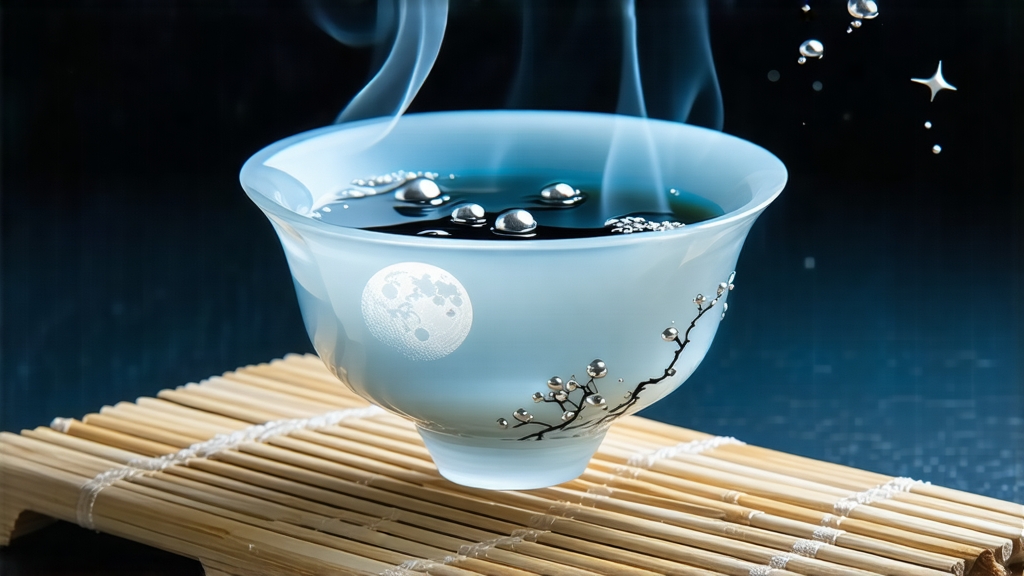
Bai Hao Yin Zhen—literally “Silver Needle White Down”—is the quiet aristocrat of Chinese white tea. While pu-erh commands auction headlines and dragon-well dazzles with emerald theatrics, Yin Zhen whispers. Its story is told in the hush of pre-dawn spring gardens, in the rustle of bamboo mats where buds lose their water drop by drop, and in the soft clang of porcelain when the first infusion blooms the color of morning light on marble. To meet this tea is to witness restraint elevated to art.
History: from imperial tribute to minimalist muse
The first written record appears in 1796, when the Daoguang Emperor received “white down needles” from Minhou county; court diaries praise their “cooling breath” during sultry Fujian summers. Yet the cultivar itself is older. Local chronicles trace the picking of unopened leaf buds to the Song dynasty’s Beiyuan tribute gardens, where monks sun-dried them on rice-paper screens as an offering to Guanyin. When British plant hunters stole tea secrets in 1848, Robert Fortune noted “the palest tea I have seen, tasting of melon rind and mountain air,” but failed to secure living cuttings; Yin Zhen remained a Chinese secret until 1891, when it won gold at the Bombay Exhibition and European apothecaries marketed it as “White China Needles for nervous fevers.” Republican-era Fuding merchants then perfected the withering shed, turning imperial tribute into a commercial crop without ever betraying its languid soul.
Terroir: where ocean mist meets granite breath
Authentic Yin Zhen comes only from three micro-zones in northeast Fujian: Fuding, Zhenghe, and Jianyang. Each lies within 30 km of the East China Sea, close enough for typhoon season to drape the hills in nocturnal fog, far enough inland that midday sun burns through the veil. The soil is Archean granite weathered into sandy loam—acidic, fast-draining, laced with potassium. Bushes grow slowly, storing amino acids in tight winter buds that sprout between Qingming and Grain Rain when nights drop to 12 °C. Locals swear the tea tastes of “stone milk,” a mineral sweetness imparted by quartz seams that radiate afternoon heat back onto the leaves.
Cultivar: the two faces of the needle
Two bush varieties are legally sanctioned. Da Bai Hao (“Big White Down”) produces plump buds 2.5–3 cm long, cloaked in so much trichome that they shimmer like frost on a spider’s web. Its liquor is creamy, with notes of honeydew and white peach. Xiao Bai Hao (“Small White Down”) bears shorter, slimmer buds whose cup leans greener, whispering of cucumber skin and alpine orchid. Purists prefer Da Bai for age-worthiness; blenders marry both for complexity. Either way, only the undamaged bud—still sheathed in its fish-scale sepals—may become Yin Zhen; one broken tip and the leaf drops to the lesser grade of Bai Mu Dan.
Craft: the art of doing almost nothing
Plucking begins at 5 a.m., when dew still ballasts the bud so it wilts rather than bruises. Pickers wear cotton gloves to keep skin oils away; each basket is lined with banana leaf. By 9 a.m. the buds reach the withering loft—an airy pavilion whose walls are made of adjustable reed slats. Here they rest 36–48 hours, depending on humidity, losing moisture in a slow exhale. No heat, no rolling, no shaking; only the master’s hand turning the buds every hour so every side meets moonlight. When the bud’s spine becomes leathery yet the tip stays silky, it is moved to a low charcoal room where dying embers of lychee wood hold 28 °C for a final two-hour “foot-drying.” The goal is 8–10 % residual moisture—enough to keep the enzyme palette alive for decades of aging. From 80 kg of fresh buds emerge 15 kg of finished tea, a ratio that explains the price but also the concentration of flavor.
Aging: the slow metamorphosis
Unlike green tea that fades, Yin Zhen polymerizes. Stored below 25 °C and 60 % humidity, the needles oxidize microscopically, trading fresh melon